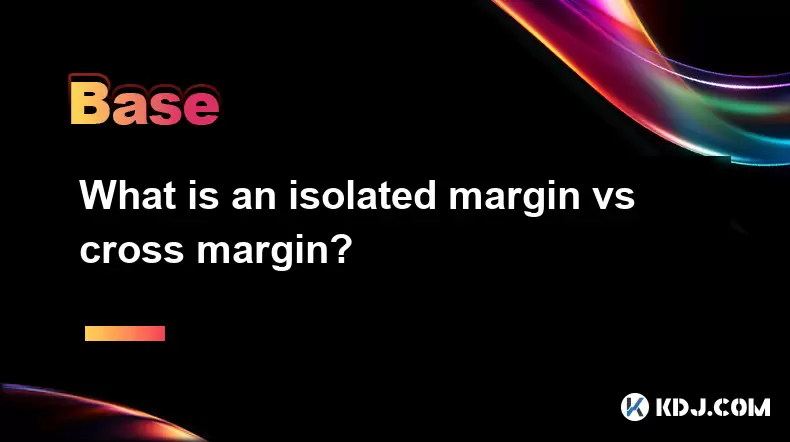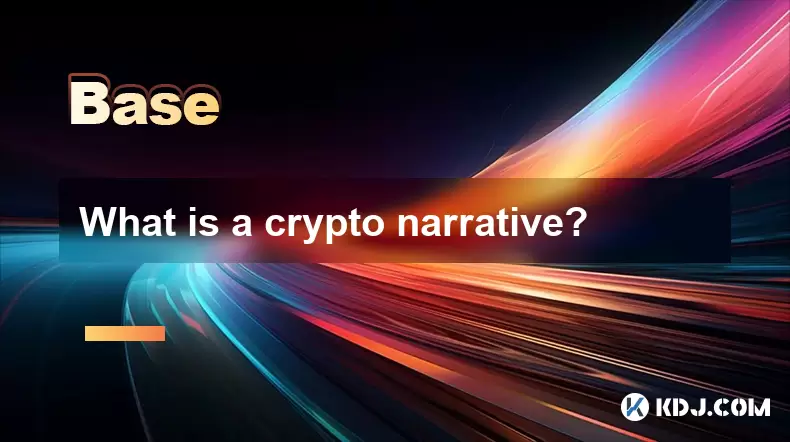-
 Bitcoin
Bitcoin $107,810.8710
-1.45% -
 Ethereum
Ethereum $2,531.4386
-1.75% -
 Tether USDt
Tether USDt $1.0000
-0.03% -
 XRP
XRP $2.2542
-0.99% -
 BNB
BNB $659.1350
-0.50% -
 Solana
Solana $148.5456
-2.40% -
 USDC
USDC $0.9999
-0.02% -
 TRON
TRON $0.2868
-0.44% -
 Dogecoin
Dogecoin $0.1666
-3.65% -
 Cardano
Cardano $0.5751
-2.36% -
 Hyperliquid
Hyperliquid $37.6845
-5.51% -
 Bitcoin Cash
Bitcoin Cash $494.9448
-0.65% -
 Sui
Sui $2.8396
-3.31% -
 Chainlink
Chainlink $13.2423
-2.59% -
 UNUS SED LEO
UNUS SED LEO $9.0482
0.02% -
 Stellar
Stellar $0.2467
-2.44% -
 Avalanche
Avalanche $17.8165
-3.63% -
 Shiba Inu
Shiba Inu $0.0...01158
-2.41% -
 Toncoin
Toncoin $2.7397
-3.42% -
 Hedera
Hedera $0.1560
-2.73% -
 Litecoin
Litecoin $85.8559
-2.34% -
 Monero
Monero $315.3710
-2.30% -
 Dai
Dai $1.0001
0.00% -
 Polkadot
Polkadot $3.3443
-2.03% -
 Ethena USDe
Ethena USDe $1.0001
0.01% -
 Bitget Token
Bitget Token $4.2888
-3.73% -
 Uniswap
Uniswap $7.3388
-1.57% -
 Aave
Aave $278.2986
-3.05% -
 Pepe
Pepe $0.0...09807
-3.67% -
 Pi
Pi $0.4563
-2.39%
What is an isolated margin vs cross margin?
Margin trading in crypto lets traders borrow funds to boost buying power, with isolated margin limiting risk per trade and cross margin using the entire account balance to support positions.
Jul 08, 2025 at 09:08 am

Understanding Margin Trading in Cryptocurrency
In the world of cryptocurrency trading, margin trading allows traders to borrow funds from a broker or exchange to increase their buying power. This enables them to open larger positions than their account balance would normally allow. Two primary types of margin systems are used in crypto exchanges: isolated margin and cross margin. Understanding the difference between these two is crucial for managing risk and maximizing returns.
What Is Isolated Margin?
Isolated margin refers to a system where each trade uses a specific, fixed amount of margin allocated independently. This means that if you open multiple trades, each has its own separate margin balance tied only to that particular position. The main benefit of this approach is risk containment, as losses on one trade won't affect other open positions.
- Each trade has its own dedicated collateral.
- Liquidation risk is limited to the margin assigned to that specific trade.
- Ideal for traders who want to manage individual positions with precision.
This setup provides granular control over leverage and liquidation levels per trade, making it suitable for experienced traders who prefer compartmentalized risk management.
How Does Cross Margin Work?
Cross margin operates differently by using the entire account balance as shared collateral across all open positions. When a trader opens multiple trades under cross margin, the system automatically allocates available equity to prevent liquidations. This can be advantageous during volatile market conditions.
- All available funds in the account serve as collateral.
- Helps avoid early liquidation by utilizing excess equity.
- Suitable for traders who want flexibility in fund allocation.
While cross margin reduces the chance of liquidation, it also increases the potential risk of losing a significant portion of the account balance if multiple trades go against the trader simultaneously.
Comparing Risk Exposure in Isolated vs Cross Margin
Risk exposure varies significantly between isolated and cross margin setups. With isolated margin, the maximum loss per trade is capped at the allocated margin amount. If the trade goes south, only that specific position gets liquidated, leaving the rest of the account untouched.
Conversely, cross margin exposes the entire account equity to all trades. While this helps keep positions open longer, it also means that severe market moves can lead to substantial losses across the board. Traders must weigh their risk tolerance carefully when choosing between these models.
- Isolated margin limits downside to individual trades.
- Cross margin spreads risk across the portfolio.
- Each method suits different trading strategies and psychological profiles.
Understanding how each model handles liquidation scenarios is key to selecting the right margin type.
Liquidation Mechanisms Explained
Liquidation occurs when the value of a leveraged position drops below the required maintenance margin level. In isolated margin, liquidation affects only the specific trade's allocated funds. The rest of the account remains unaffected, preserving capital for future opportunities.
Under cross margin, the system uses the total account equity to support open positions. If one trade nears liquidation, the platform pulls funds from the overall balance to keep it active. However, once the total equity dips below the maintenance threshold, full liquidation becomes possible.
- Isolated margin ensures single-trade liquidation.
- Cross margin delays liquidation but increases systemic risk.
- Traders should monitor maintenance margin requirements closely.
The liquidation process plays a critical role in determining which margin strategy aligns better with a trader’s goals and risk appetite.
Choosing Between Isolated and Cross Margin
Selecting the appropriate margin mode depends on several factors including trading style, experience level, and risk preference. Day traders who frequently open and close positions may prefer isolated margin for better control and separation of trades. Long-term investors or those comfortable with portfolio-wide risk might lean toward cross margin for its flexibility.
- Assess your trading frequency and position size.
- Evaluate your ability to monitor open trades actively.
- Consider your emotional response to partial or total liquidation.
Many platforms allow switching between margin modes, giving traders the freedom to adapt based on changing market conditions or personal preferences.
Frequently Asked Questions (FAQ)
Can I switch between isolated and cross margin while holding open positions?
Yes, most exchanges allow switching between margin modes even with active trades. However, doing so may impact liquidation levels and risk exposure. Always review your positions after making a change.
Does cross margin always protect my trades from liquidation?
No, cross margin does not guarantee protection. It uses available equity to delay liquidation, but if total account equity falls below the required maintenance level, liquidation will occur.
Which margin mode is better for beginners?
Beginners often find cross margin more forgiving since it uses total equity to support trades. However, understanding both systems helps new traders make informed decisions as they gain experience.
Are there fees associated with using isolated or cross margin?
Exchanges typically charge funding fees for leveraged positions rather than for the margin mode itself. These fees depend on the borrowed amount and duration of the trade, not whether isolated or cross margin is used.
Disclaimer:info@kdj.com
The information provided is not trading advice. kdj.com does not assume any responsibility for any investments made based on the information provided in this article. Cryptocurrencies are highly volatile and it is highly recommended that you invest with caution after thorough research!
If you believe that the content used on this website infringes your copyright, please contact us immediately (info@kdj.com) and we will delete it promptly.
- KuCoin, AI Incentives, and Gaming RWA: A New Era?
- 2025-07-08 14:30:12
- Meme Token Mania: SPX6900, TOKEN6900, and the Degens Driving Crypto's Brain Rot
- 2025-07-08 14:30:12
- Bitcoin Gains and Strategy Reports: What's the Haps?
- 2025-07-08 15:10:12
- Ripple, XRP ETF, Latest Data: Hopes Fade but Innovation Blooms?
- 2025-07-08 15:10:12
- Eric Trump, Bitcoin Asia, and Hong Kong: A Power Trio Shaping Crypto's Future
- 2025-07-08 14:50:12
- Pumpfun, Token Sale, and Gate Exchange: What's the Deal?
- 2025-07-08 14:50:12
Related knowledge

What is a user-generated content (UGC) NFT platform?
Jul 04,2025 at 01:49pm
Understanding the Concept of a UGC NFT PlatformA user-generated content (UGC) NFT platform is a digital marketplace or ecosystem where users can create, mint, and trade non-fungible tokens (NFTs) that represent ownership of original digital content they produce. Unlike traditional NFT platforms where creators often include professional artists or develo...

What is composability in DeFi?
Jul 06,2025 at 04:07pm
Understanding the Concept of Composability in DeFiComposability in DeFi refers to the ability of decentralized finance protocols and smart contracts to interact seamlessly with one another, much like building blocks that can be combined in various ways to create new financial products and services. This concept is a core innovation within the DeFi ecosy...

What is a "crypto primitive"?
Jul 05,2025 at 10:14pm
Defining the Concept of a Crypto PrimitiveIn the context of blockchain and cryptocurrency, a crypto primitive refers to a fundamental building block or foundational element used in constructing decentralized systems and cryptographic protocols. These primitives are essential for enabling secure transactions, consensus mechanisms, and smart contract exec...

What is a crypto narrative?
Jul 07,2025 at 10:56pm
Defining the Concept of a Crypto NarrativeA crypto narrative refers to the overarching story or theme that drives interest, investment, and development within a particular segment of the cryptocurrency market. Unlike traditional financial assets, cryptocurrencies often gain momentum not solely based on technical merits but through compelling narratives ...

What is a stealth launch?
Jul 08,2025 at 06:42am
What Exactly Defines a Stealth Launch in Cryptocurrency?A stealth launch refers to the practice of launching a cryptocurrency project without prior public announcement or marketing efforts. This method is often used by development teams who prefer to keep their project under wraps until it reaches a certain level of maturity, adoption, or liquidity. Unl...

What is a fair launch?
Jul 05,2025 at 07:31pm
Understanding the Concept of a Fair LaunchA fair launch refers to the release of a cryptocurrency or blockchain project in a manner that ensures equal opportunity for all participants. Unlike traditional token launches, which may involve private sales, venture capital funding, or pre-mining, a fair launch emphasizes transparency and decentralization. In...

What is a user-generated content (UGC) NFT platform?
Jul 04,2025 at 01:49pm
Understanding the Concept of a UGC NFT PlatformA user-generated content (UGC) NFT platform is a digital marketplace or ecosystem where users can create, mint, and trade non-fungible tokens (NFTs) that represent ownership of original digital content they produce. Unlike traditional NFT platforms where creators often include professional artists or develo...

What is composability in DeFi?
Jul 06,2025 at 04:07pm
Understanding the Concept of Composability in DeFiComposability in DeFi refers to the ability of decentralized finance protocols and smart contracts to interact seamlessly with one another, much like building blocks that can be combined in various ways to create new financial products and services. This concept is a core innovation within the DeFi ecosy...

What is a "crypto primitive"?
Jul 05,2025 at 10:14pm
Defining the Concept of a Crypto PrimitiveIn the context of blockchain and cryptocurrency, a crypto primitive refers to a fundamental building block or foundational element used in constructing decentralized systems and cryptographic protocols. These primitives are essential for enabling secure transactions, consensus mechanisms, and smart contract exec...

What is a crypto narrative?
Jul 07,2025 at 10:56pm
Defining the Concept of a Crypto NarrativeA crypto narrative refers to the overarching story or theme that drives interest, investment, and development within a particular segment of the cryptocurrency market. Unlike traditional financial assets, cryptocurrencies often gain momentum not solely based on technical merits but through compelling narratives ...

What is a stealth launch?
Jul 08,2025 at 06:42am
What Exactly Defines a Stealth Launch in Cryptocurrency?A stealth launch refers to the practice of launching a cryptocurrency project without prior public announcement or marketing efforts. This method is often used by development teams who prefer to keep their project under wraps until it reaches a certain level of maturity, adoption, or liquidity. Unl...

What is a fair launch?
Jul 05,2025 at 07:31pm
Understanding the Concept of a Fair LaunchA fair launch refers to the release of a cryptocurrency or blockchain project in a manner that ensures equal opportunity for all participants. Unlike traditional token launches, which may involve private sales, venture capital funding, or pre-mining, a fair launch emphasizes transparency and decentralization. In...
See all articles

























































































